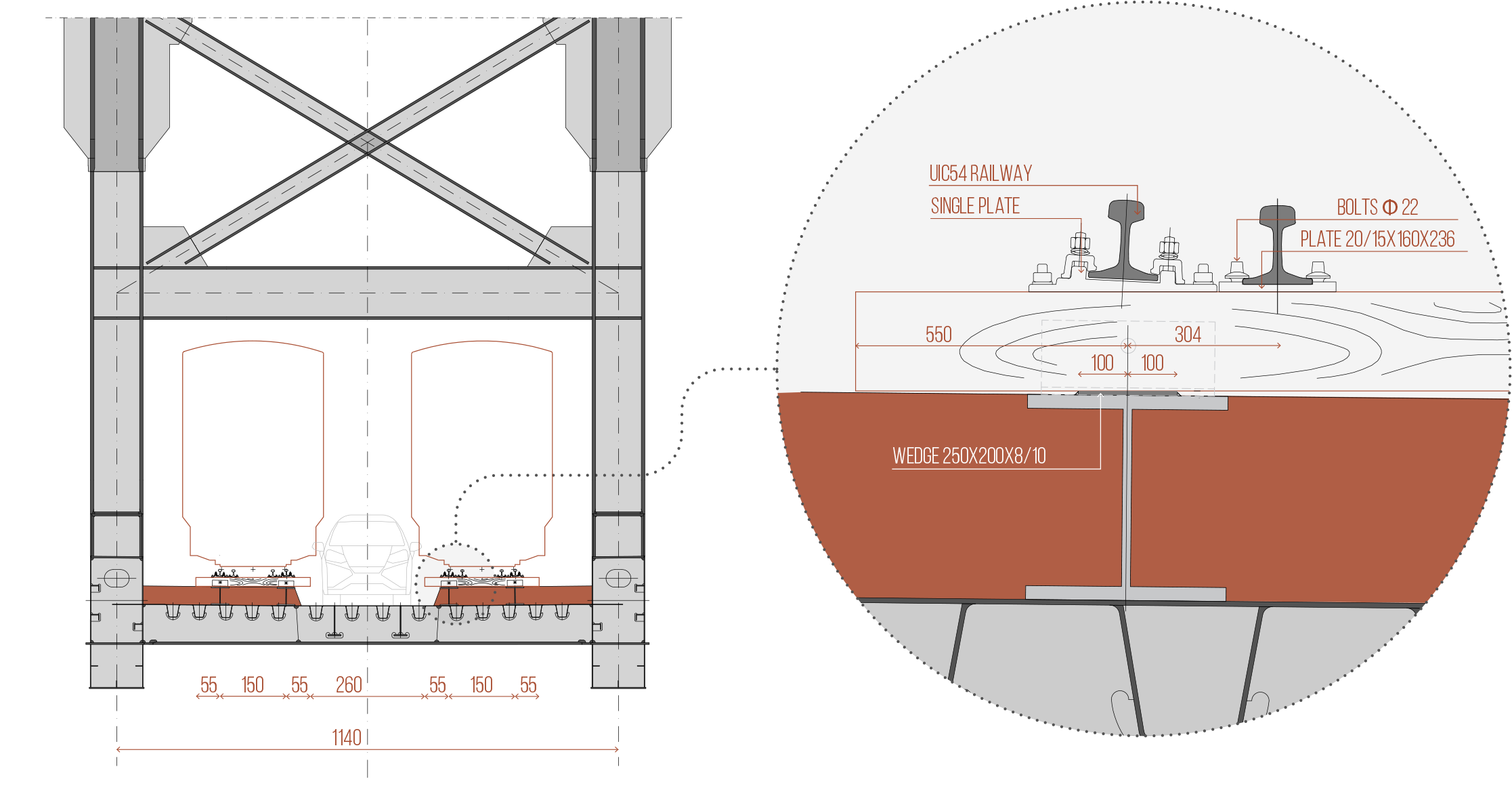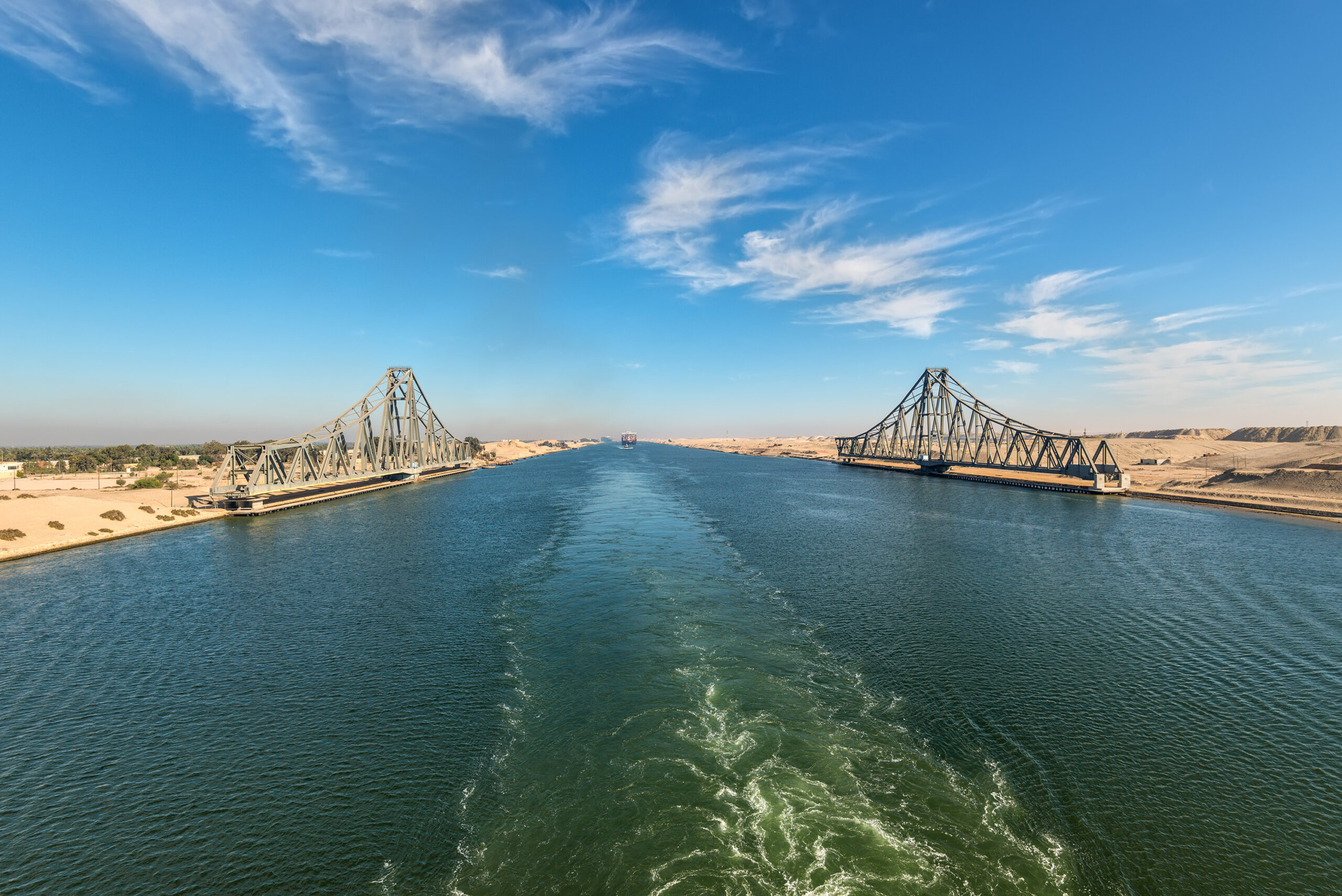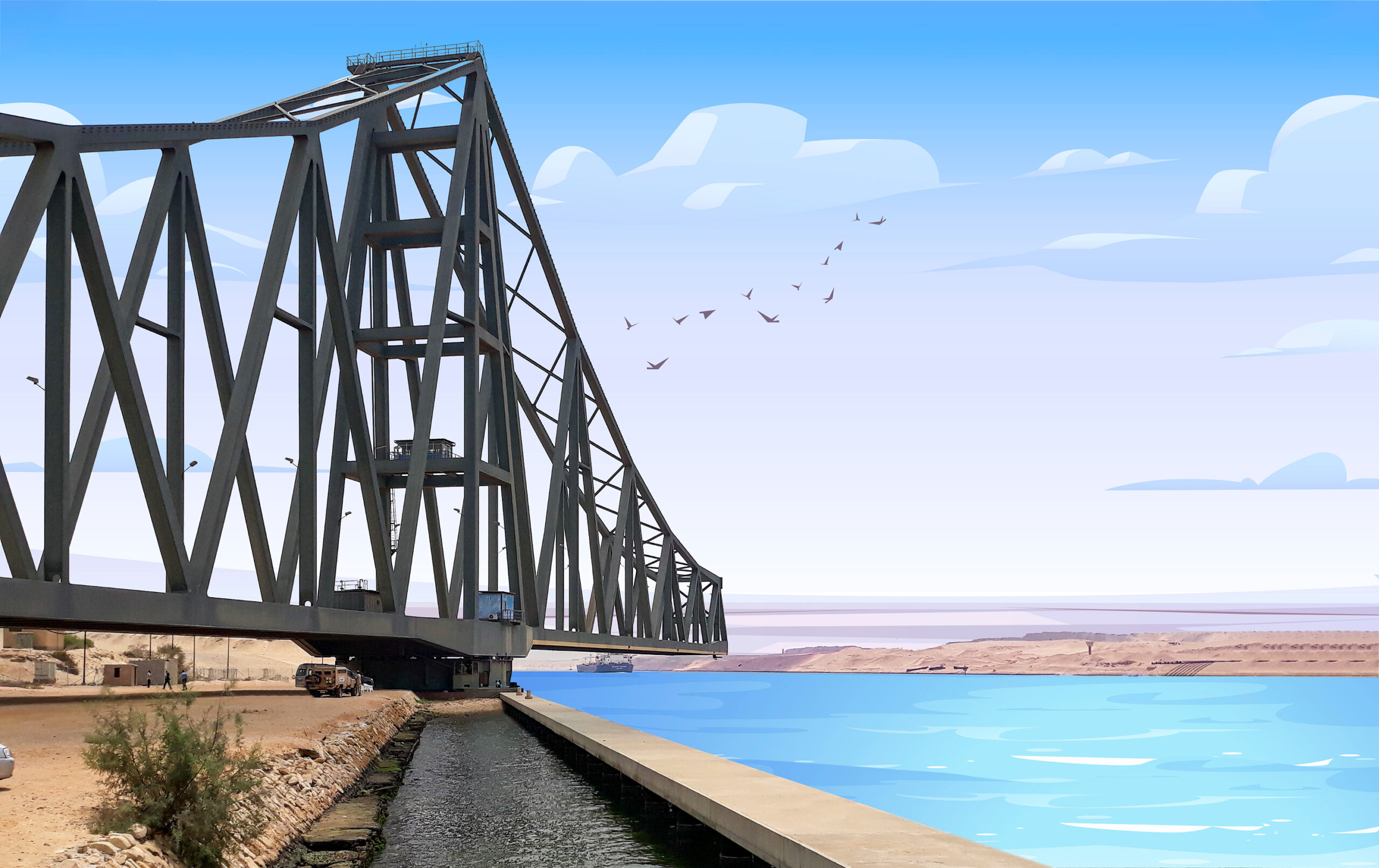El Ferdan Bridge
Refurbishment of the railway line over the Suez Canal
El Ferdan Bridge, the longest railway swing bridge in the world, was built over the Suez canal in 2001. It fell into disuse in 2015 after the Canal was doubled. Today, it is undergoing important structural strengthening – loans obtained from the Egyptian government have enabled the refurbishment of the railway line due to the construction of a twin bridge and the doubling of the line. It is a very important project for the Egypt as the railway line using the El Ferdan Bridge is the only railway connection between Egypt and the Middle East. The line could connect with the Jordanian railway network by crossing the Sinai, thus arriving in Saudi Arabia and then the United Arab Emirates and is part of a much wider project that aims at connecting all Arab countries together.
The project also has an important impact on the social and environmental aspects of the area. The Sinai peninsula is the poorest Egyptian region. Refurbishment of the railway would allow low-income families who without a car to travel long distances, promoting the start of local commerce. Therefore, refurbishment of the railway could encourage the population of the area, new businesses to prosper and so the development of the region. Reactivation of the line would also generate significant environmental benefits. Since 2015, the Suez Canal has only been crossed by roads and therefore all goods moving from Egypt to the Arab peninsula and vice versa only move by road or by ship. The railway would, therefore, be a specially important alternative for the more sustainable movement of goods over long distances.

Planning the railway line
In this context, NET Engineering designed the railway line that crosses the Suez Canal using both the new and old bridges as well as the refurbishment and modernisation of the sidings for waiting trains. As they have been unused for a long time, they need to be renewed and the capacity increased. As there are often important time restrictions on use of the bridge, freight trains wait in the sidings east and west of the Canal in the hours before the opening ready to cross it.
NET Engineering also took care of the updating of the railway tracks of the existing bridge with the aim of planning a passable route with the two tracks and the optimisation of the structural reinforcement of the deck. In detail, NET Engineering’s work concerned the detailed design, railways tracks, earth movements, significant geotechnical operations and also assistance while the construction site is active (ongoing) until the work is completely finished. The study of the railways tracks on the two bridges was especially challenging – the decks, designed according to specific Egyptian regulations integrated with the Eurocodes, are not conventional and different from each other.


